 As a young boy, I liked to work on the family car with my dad. He taught me how to change the oil, check the spark plugs, replace the shock absorbers, adjust the timing and lots of other tasks that were common on older cars. I remember the first time he let me use the socket wrench. I thought it was the greatest tool ever invented. I could loosen bolts, then moving a small switch into a different position, the same wrench could now tighten bolts. It is a very versatile tool, one I still make sure to have handy to this day.
As a young boy, I liked to work on the family car with my dad. He taught me how to change the oil, check the spark plugs, replace the shock absorbers, adjust the timing and lots of other tasks that were common on older cars. I remember the first time he let me use the socket wrench. I thought it was the greatest tool ever invented. I could loosen bolts, then moving a small switch into a different position, the same wrench could now tighten bolts. It is a very versatile tool, one I still make sure to have handy to this day.
I appreciate having well-designed tools available that can be used in a variety of situations. In my career, these tools have sometimes been software tools. I have spent a lot of my career working with equipment connectivity standards and seeing the benefits of having process equipment connected to a factory control system. Whether it is for full equipment control, or just to monitor and gather data from the equipment, having a robust connection to equipment is valuable.
When I first started connecting equipment to factory control systems, the GEM standard had not been finalized. There was a lot of variability in the SECS message implementations available from the different equipment vendors. I was almost always able to get the equipment connected to the factory system, but generally each connection was custom to that equipment vendor and equipment type. This meant that each connection took far too much time to complete and made supporting different equipment very difficult.
Once the GEM standards were finalized and adopted, there was now a versatile way to provide consistency and reusability across equipment types and across equipment vendors. Connecting to different types of equipment was principally a configuration task instead of a custom coding task.
In addition, industry standard compliance test tools were developed to ensure compliance with the GEM standards and harden the implementations for reliable production use. This increased reliability helped drive the adoption and implementation of GEM in the global semiconductor front-end manufacturing industry. As a result, GEM has become a well-established reliable communication standard that is widely used and accepted.
As other segments of the semiconductor and related electronics manufacturing markets have looked to connect equipment to their factory control systems, many have evaluated GEM and other communication standards to provide this functionality. In some cases, GEM was considered too old, too complex, or not a good fit. But, like the versatile socket wrench, many industry segments have seen the value of the stability and proven nature of GEM. They found that the socket wrench (GEM) was the right tool—they just needed a different sized socket (industry-specific guidance) to fit their needs. Let’s look at a few examples.
SEMI PV2
 In 2007, when the photovoltaic industry wanted to increase manufacturing efficiencies and reduce costs, they looked to implement industry-wide standards. They formed the Photovoltaic Equipment Interface Specification Task Force to define the interface between the factory control system and the equipment.
In 2007, when the photovoltaic industry wanted to increase manufacturing efficiencies and reduce costs, they looked to implement industry-wide standards. They formed the Photovoltaic Equipment Interface Specification Task Force to define the interface between the factory control system and the equipment.
The task force created two working sub-teams to evaluate existing solutions and the requirements of the industry. Several existing solutions such as SECS/GEM, EDA, OPC-UA, and XML were evaluated based on functionality, reliability, extendibility, and the ability to be integrated into different environments. The conclusion of both teams was to build on the SEMI GEM (E30) standard.
The socket wrench (GEM) was the right tool, and a new socket (SEMI PV2) provided the required fit for their equipment and industry.
HB-LED
In 2010, when the high-brightness light-emitting diode (HB-LED) industry started their search for connectivity standards. They needed something that would allow low-cost, common hardware and software interfaces, and other means to enable HB-LED factories to effectively utilize multiple equipment types from multiple vendors in a highly automated manufacturing environment.
This search found that the best course was to leverage the functionality, reliability, and extendibility of GEM. The SEMI HB4: Specification of Communication Interfaces for High-Brightness LED Manufacturing Equipment (HB-LED ECI) defines the behavior of HB-LED equipment and is based on the SEMI E30 (GEM) standard.
Again, the socket wrench (GEM) was the right tool. What they needed was a socket (HB4) that would meet the needs of their industry.
PCBECI
In February 2019, the Taiwan Printed Circuit Association (TPCA) initiated an activity seeking to boost network connectivity of PCB equipment and help PCB makers implement smart manufacturing practices in the industry.
The result of this effort was the publication in August of 2019 of the SEMI A3: Specification for Printed Circuit Board Equipment Communication Interfaces (PCBECI). This is a robust and comprehensive shop-floor communication standard that specifies the detailed, bidirectional communications needed to improve productivity and reduce the costs to develop equipment interfaces for PCB manufacturing. The SEMI A3 (PCBECI) standard is based on the SEMI E30 (GEM) standard.
Yet again, the socket wrench (GEM) was the right tool and all that was needed was a socket for their specific needs (PCBECI).
It is understandable to think of GEM as an old and complex standard. It has been around for years and can be difficult to understand. However, it has continued to be reviewed and updated as manufacturing needs have changed. As different market segments have looked for equipment communication standards to meet their specific needs, several have found that the functionality, reliability, extendibility and the ability to be integrated into different environments provided by GEM was the right tool. All that was needed were some companion specifications related to GEM to provide a better fit for their requirements.


 As hard as it is to believe, 2019 is over and 2020 has just begun! This is a great time to take a look back over the milestones and accomplishments of the Cimetrix team during 2019 and review some of the highlights! We are really proud of our team and we love to celebrate their hard work and accomplishments throughout the year.
As hard as it is to believe, 2019 is over and 2020 has just begun! This is a great time to take a look back over the milestones and accomplishments of the Cimetrix team during 2019 and review some of the highlights! We are really proud of our team and we love to celebrate their hard work and accomplishments throughout the year. In order to reach the goals of Industry 4.0 and Smart Manufacturing, factories must be able to monitor and control manufacturing equipment remotely. Therefore the equipment must have a software interface to provide this functionality and the factory must be able to access and use this interface.
In order to reach the goals of Industry 4.0 and Smart Manufacturing, factories must be able to monitor and control manufacturing equipment remotely. Therefore the equipment must have a software interface to provide this functionality and the factory must be able to access and use this interface.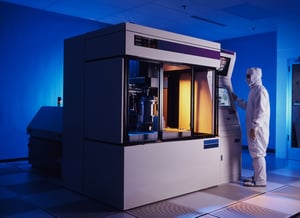

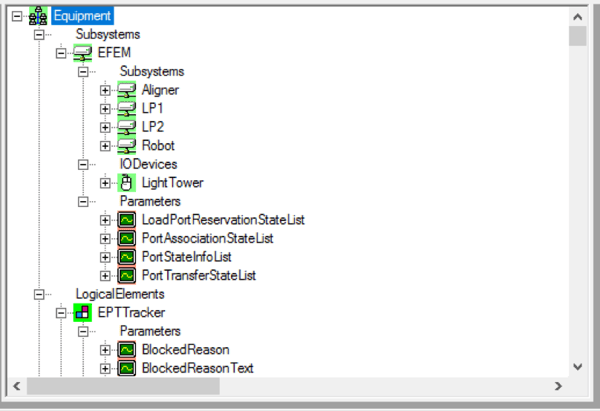
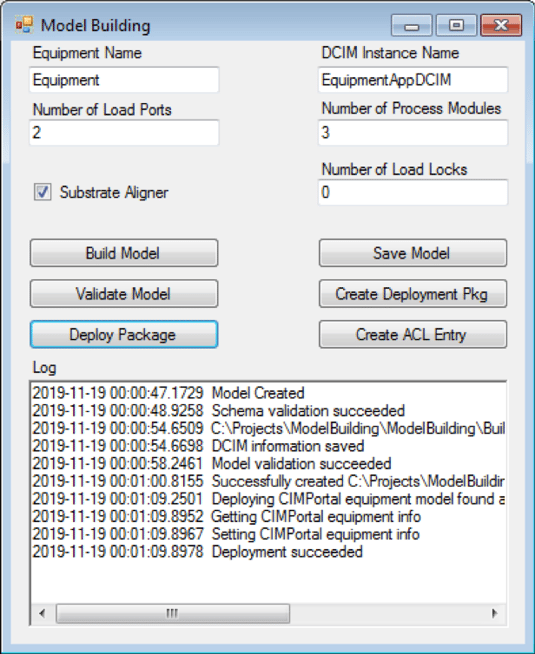


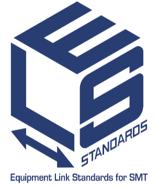
 The 31st annual APC Conference is now in the history books, and the diversity of topics, presenters, and local distractions made it well worth the visit to San Antonio! This year’s agenda featured half-day tutorials on the basics of APC and cyber-security, keynotes from chip makers and leading suppliers on automotive industry requirements, smart equipment, and smart manufacturing, and a series of packed technical sessions covering sensors and equipment control, fault detection and feedforward/feedback control, advanced analytics, and standards.
The 31st annual APC Conference is now in the history books, and the diversity of topics, presenters, and local distractions made it well worth the visit to San Antonio! This year’s agenda featured half-day tutorials on the basics of APC and cyber-security, keynotes from chip makers and leading suppliers on automotive industry requirements, smart equipment, and smart manufacturing, and a series of packed technical sessions covering sensors and equipment control, fault detection and feedforward/feedback control, advanced analytics, and standards.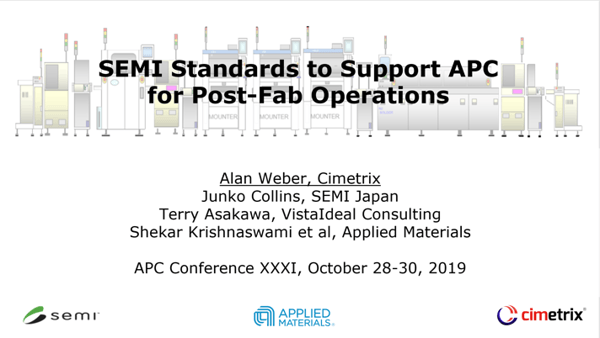 The SMT-ELS standard has come a long way in a short time, and the ambitious, integrated demonstration created by 4 major SMT suppliers (Fuji, Juki, Panasonic, Yamaha) that was exhibited in June (Japan) and August (China) will again be shown in productronica (Munich, 13-15 November). The basic functions of SMT-ELS (officially designated at SEMI A1, A1.1, and A2) appear in the figure below.
The SMT-ELS standard has come a long way in a short time, and the ambitious, integrated demonstration created by 4 major SMT suppliers (Fuji, Juki, Panasonic, Yamaha) that was exhibited in June (Japan) and August (China) will again be shown in productronica (Munich, 13-15 November). The basic functions of SMT-ELS (officially designated at SEMI A1, A1.1, and A2) appear in the figure below.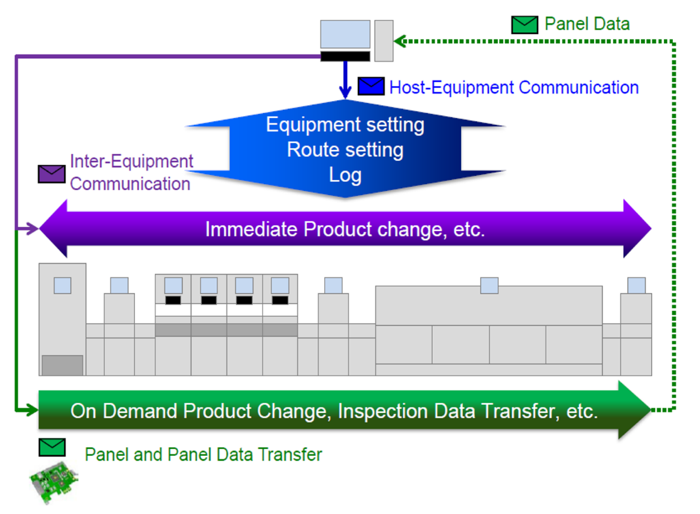 Cimetrix will likewise demonstrate this new standard at productronica, showing not only an equipment-level implementation of the M2M features but also the host-based configuration process and a plug-in for doing protocol validation tests.
Cimetrix will likewise demonstrate this new standard at productronica, showing not only an equipment-level implementation of the M2M features but also the host-based configuration process and a plug-in for doing protocol validation tests.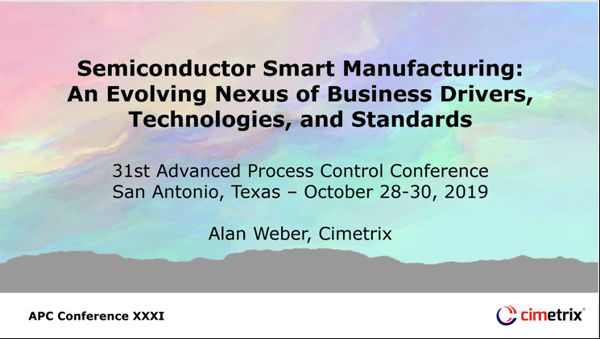 If you would like any further information, you can speak with a Cimetrix expert, or you can stop by our booth at productronica this week (Hall A3 booth 451).
If you would like any further information, you can speak with a Cimetrix expert, or you can stop by our booth at productronica this week (Hall A3 booth 451). 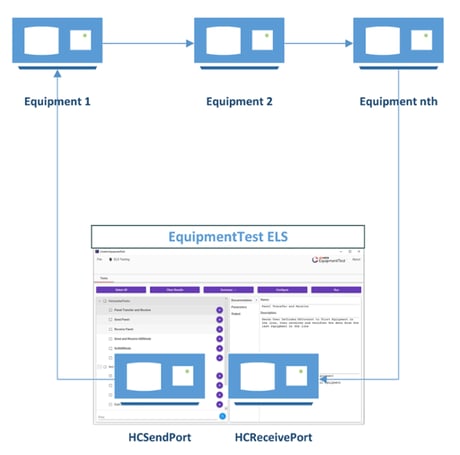

 The Cimetrix Resource Center is a great way to familiarize yourself with standards within the industry as well as find out about new and exciting technologies.
The Cimetrix Resource Center is a great way to familiarize yourself with standards within the industry as well as find out about new and exciting technologies. 

